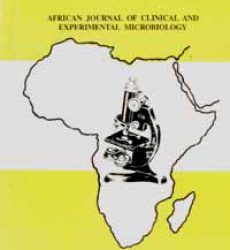1Azeez, T. A.,2Lakoh, S., 3Bamidele, O. T., 4Ekhaiyeme, E., and 5Nwosu, S. A.
1Endocrinology Unit, Department of Medicine, University College Hospital, Ibadan, Nigeria
2Infectious Diseases Unit, Department of Medicine, College of Medicine and Allied Health Sciences, Freetown, Sierra Leone
3Department of Chemical Pathology, Babcock University Teaching Hospital, Ilisan Remo, Nigeria
4Endocrinology Unit, Department of Medicine, University College Hospital, Ibadan, Nigeria
5College of Medicine, University of Ibadan, Ibadan, Nigeria
*Correspondence to: adegokegalaxy@yahoo.com; +2347035728747
Abstract:
Coronavirus disease-2019 (COVID-19) has been declared as a pandemic affecting several millions of people worldwide. It has varied clinical manifestations ranging from asymptomatic to critical illness. It has led to the mortality of several affected individuals. However, the prognosis seems to vary from one person to the other and efforts are being made to identify the prognostic factors. Hypocalcaemia has been identified as a poor prognostic factor with a high frequency among individuals affected with COVID-19. This review aims to estimate the prevalence of hypocalcaemia among COVID-19 patients and identify the poor prognostic factors associated with the presence of hypocalcaemia in COVID-19 patients. Electronic medical databases were searched for publications on the prognostic implications of hypocalcaemia in COVID-19 infection, and relevant articles were selected for systematic review following PRISMA algorithm. The prevalence of hypocalcaemia among patients with COVID-19 was 40.0-74.4%. There was a significant association between the rate of hospital admission, intensive care unit (ICU) admission as well as septic shock and hypocalcaemia in patients with COVID-19. Hypocalcaemia is also associated with a higher mortality rate in these patients. COVID-19 patients with hypocalcaemia tend to have elevated C-reactive protein, interleukin6, alanine transaminase, procalcitonin, serum creatinine and low albumin. Hypocalcaemia is common in COVID-19 patients and is a poor prognostic factor in these patients. Presence of hypocalcaemia is associated with a severe illness and even death. Continue reading “Prognostic implication of hypocalcaemia in COVID-19: a systematic review”

